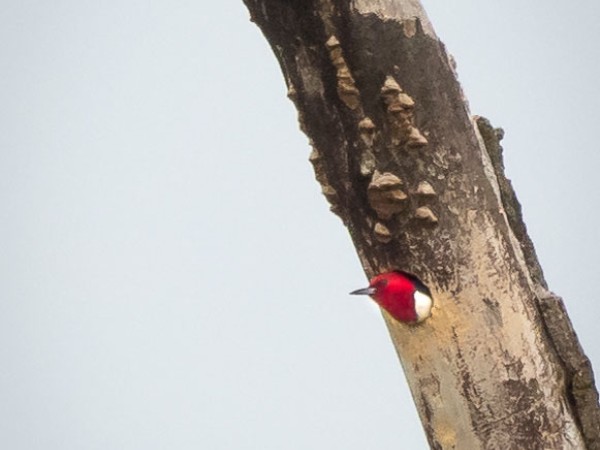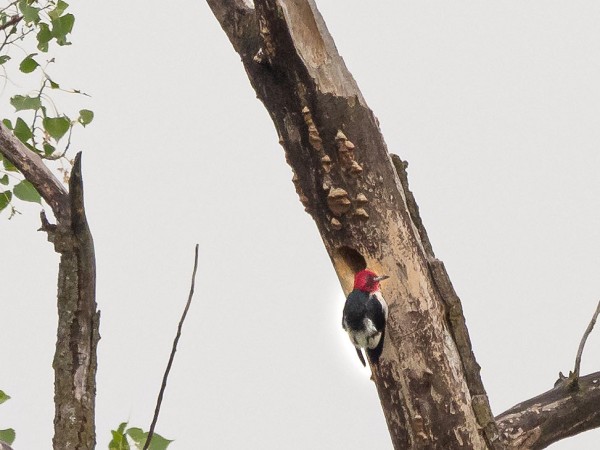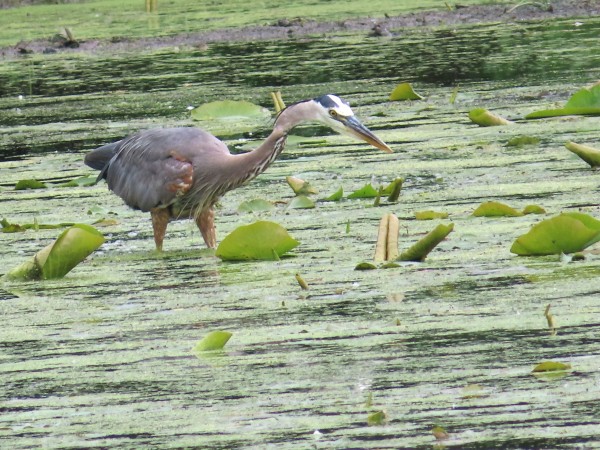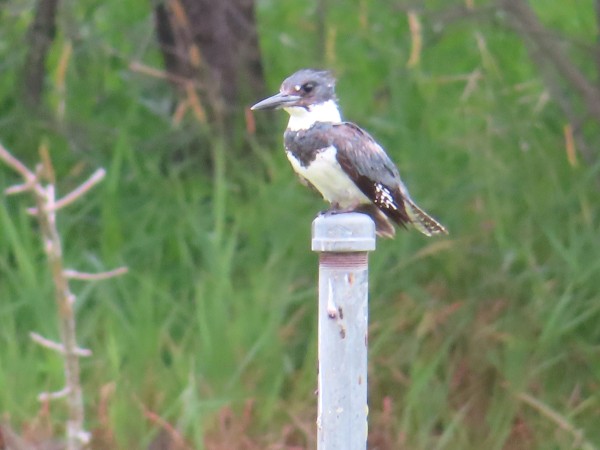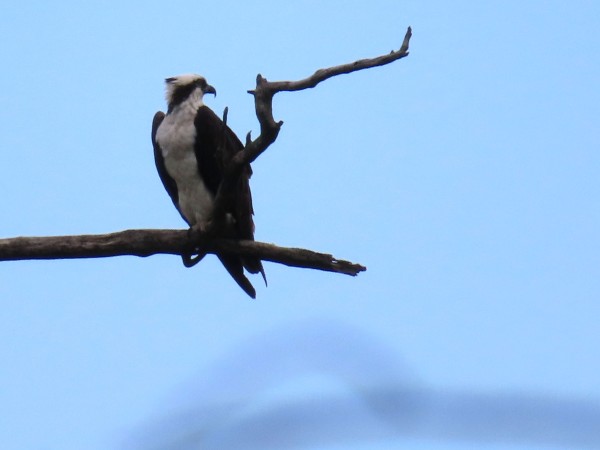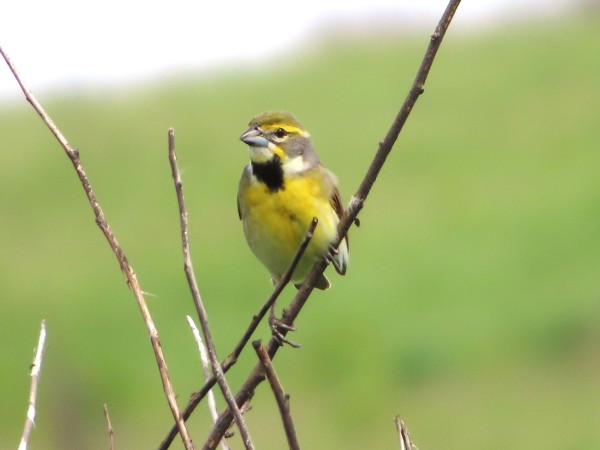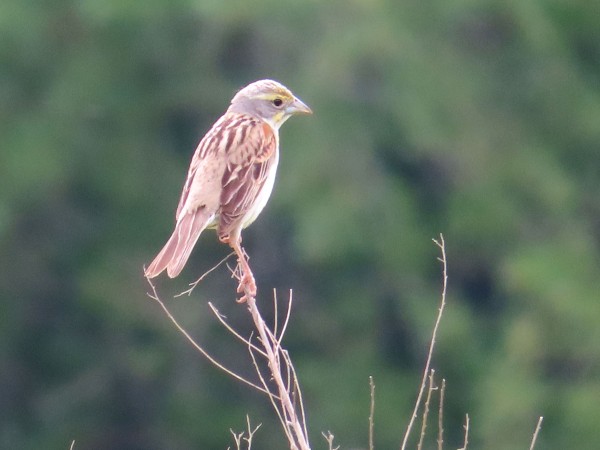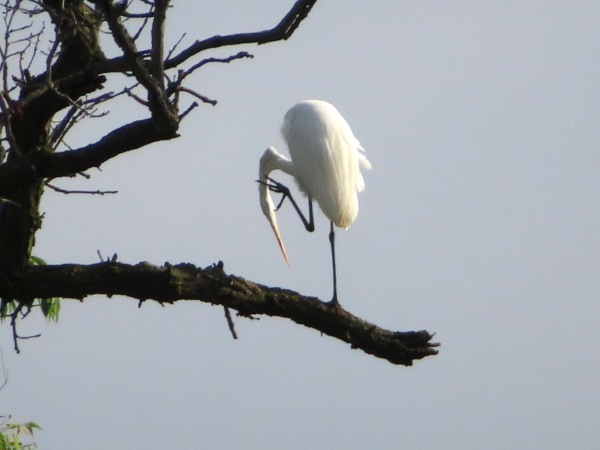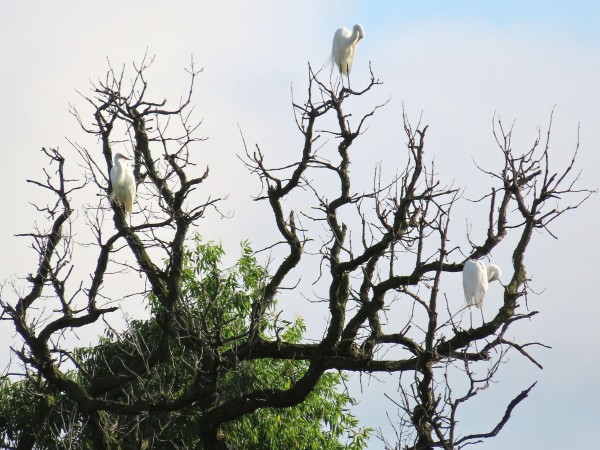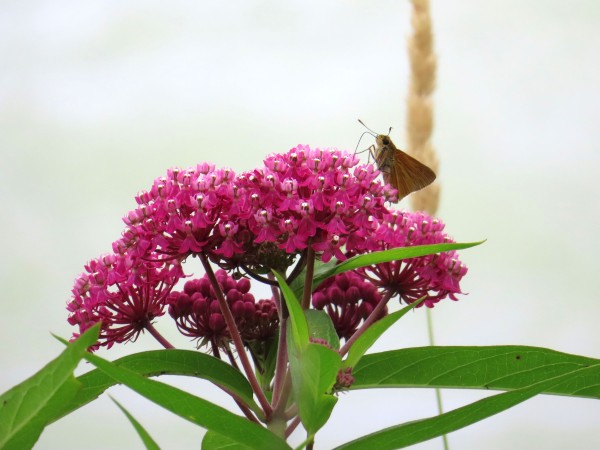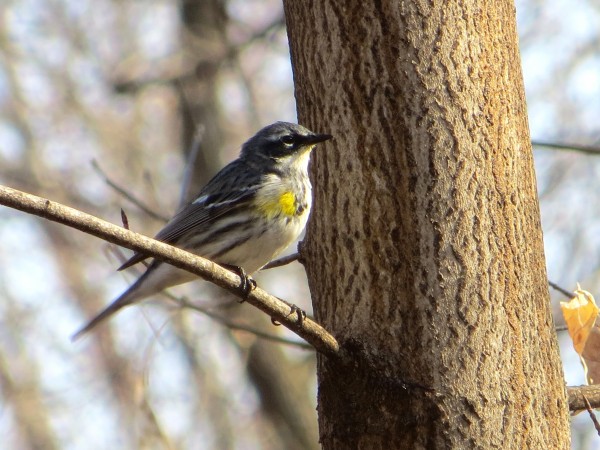Chuck's Birding Report #121
05 July - 11 July 2022
Dear fellow flock of birders,
Was there any unusual bird activity in the Arb this past week? Not so much.
The Barn Swallows have all fledged from under the Visitor Center eaves and are mostly out flying around. There has been a sequence to their perching locations. They have moved from the nests to the deck railing of the Visitor Center. I’ve also seen them perched side by side on the power lines especially those near the parking lot. From the deck railing they moved up to the gutters of the Visitor Center. Most recently they have been perching on the upper frames of the solar panels. My guess is that they are charging up their batteries in order to fly around Curtis Prairie all day to catch insects.
Bob and Maggie Honig saw the Northern Flickers fledge from the rectangular hole in the snag west of Pond 2. At one time that snag had two, possibly nesting woodpecker species, Northern Flickers in the upper rectangular hole and Pileated Woodpeckers in the round hole just a few feet below. I called it the two-story woodpecker condo. But alas, the Pileated Woodpeckers must not have liked their neighbors above them (maybe too noisy) and abandoned the condo.
The pair of Red-headed Woodpeckers is still flying around the snag located at the west end of Teal Pond Marsh. To see the large snag clearly you need to walk toward Teal Pond and turn south as if heading toward Pond 2. Walk about 20 feet and look west. The leafless snag is huge and the other nearby trees are Cottonwoods with leaves. The Red-headed Woodpeckers have been visiting and possibly nesting in one particular hole in a branch of the snag that is about in the middle. If you can find a branch that ends in two short prongs you have found the right branch. Starting at the top of those prongs follow the blackened surface down a few feet to a tan area that then has more black below it. The hole the woodpeckers like is right at the top of the tan area. The two photos that I’ve attached should clarify my jibber jabber. Bob Jaeger is a wonderful photographer and has contributed two photo of the Red-headed Woodpecker on the snag branch. The first photo shows the woodpecker very near the hole peaking in sometimes. Maybe a mate is on eggs inside. The second photo shows a woodpecker head sticking out of the hole. Are they nesting there or not? We just don’t know yet but they do like that hole. Thanks Bob for the great photos.
Today besides birding in the main part of the Arb, I went to the southern part of Gardner Marsh and parked along Carver Street. The southern part of Gardner Marsh is continuous with Harvey Schmidt Park. I walked to the east end of the waterway that is wide. From the edge of that pond I watched two adult Great Blue Herons stalking the pond for what I thought were fish. As I watched more closely what they were actually catching were frogs. When they would lift their heads I could see the legs sticking out of their beaks. They swallowed them whole very quickly. It was really fun to watch them step slowly forward and then bring their heads close to the water and suddenly extend their necks plunging their heads into the water and capturing a frog. They can really extend that neck quite far. I’ve included a photo of a heron about to catch a frog.
I also looked at the nests in the rookery. There are only three nests this year. The middle nest has 3 young while the other two nests only have one nestling each.
In the same pond I heard the clattering of a flying Belted Kingfisher. As I watched it hover over the water before plunging in for fish. Eventually it perched on the top of a metal post that had a nest box below for Wood Ducks. It rested there for a long time while I took photos of it. One of the photos is included. This Belted Kingfisher didn’t have much color and then I remembered the difference in colors between sexes. What sex is the Belted Kingfisher in the photo?
Toward the end of my stay at the pond along Carver Street I happened to run into David Liebl who took out his spotting scope to look at the Osprey nest just north of the heron rookery. If you want to see the nest well, it’s best to look at it from Carver Street. It’s difficult to see the nest from Arboretum Drive because there are just too many trees with leaves that obstruct the view. Anyway David showed me the Osprey nest with his spotting scope and we could see the female Osprey and three nestlings. We also saw the male perched some distance west of the nest. When we looked at it through the scope it had in its talons on a good-sized fish. It ate a bit of it at its perch and then brought the fish to the nest. The female proceeded to eat some of the fish first and shared a few bits with the kids. I learned from David how to tell the difference between the male and the female Osprey. First, the female is bigger than the male but also there are plumage differences. Included is a photo of an adult Osprey. Is it a male or is it a female?
I birded some other areas this week besides the Arboretum.
I went to Anderson Farm County Park with Ellen Hanson to bird the woods and prairie. Upon arriving we immediately heard and saw several Red-headed Woodpeckers. We also saw Eastern Bluebirds. After walking through the woods and prairie we drove to the south end where there is a dog park with a trail through a prairie. That’s where we saw several calling Dickcissels. There was even a pair of them perched relatively close to each other. Included are photos of both the male and the female. I labeled them so you don’t have to work so hard determining the sex of each.
I also went birding at Swan Pond and the Oregon Rotary Trail. I saw lots of birds (51 species). It’s a comfortable walk because it is paved for most of the way. What I really liked were four Great Egrets who landed in a mostly dead tree at the east end of Swan Pond. Included is a photo of 3 of the egrets in various poses while perched in the dead tree. The second photo is a Great Egret standing on one foot and scratching its neck. I’m always amazed how these long legged birds can balance when standing on one leg. I challenge you to stand on one foot and try to scratch your neck with the toes of your other foot. You’re not allowed to send me the hospital bills.
For my last photo I thought I needed some color. Today I saw a butterfly perched on a recently bloomed Swamp Milkweed. The milkweed was a beautiful dark pink but the butterfly failed the beauty contest. I didn’t have time to classify the butterfly so that’s your job if you want to know what it is.
I apologize for all the work I asked you to do but I hope it’s worth it.
That’s the Arboretum bird et al report for the past week.
I wish all of you good health and good birding too,
Chuck

